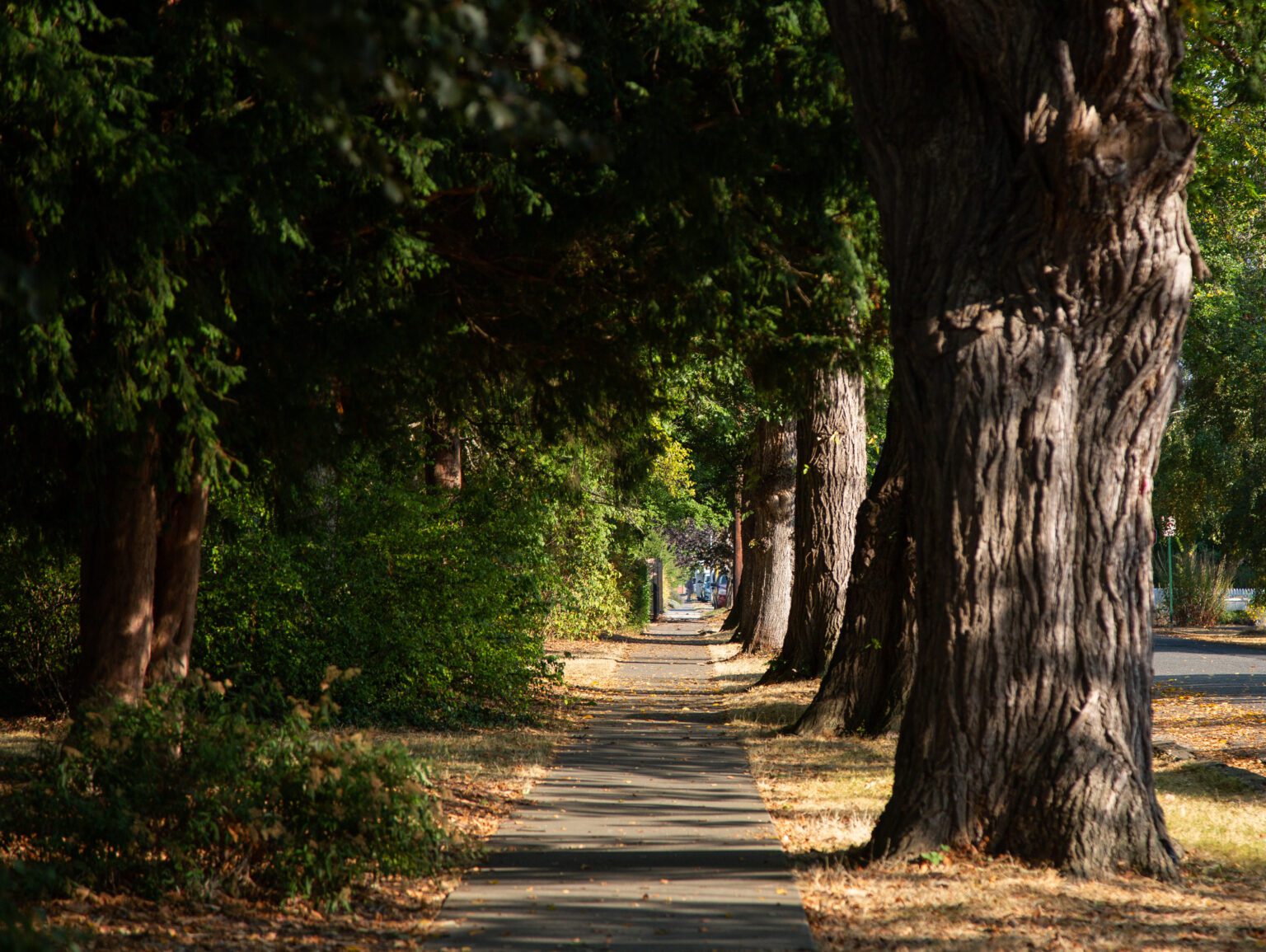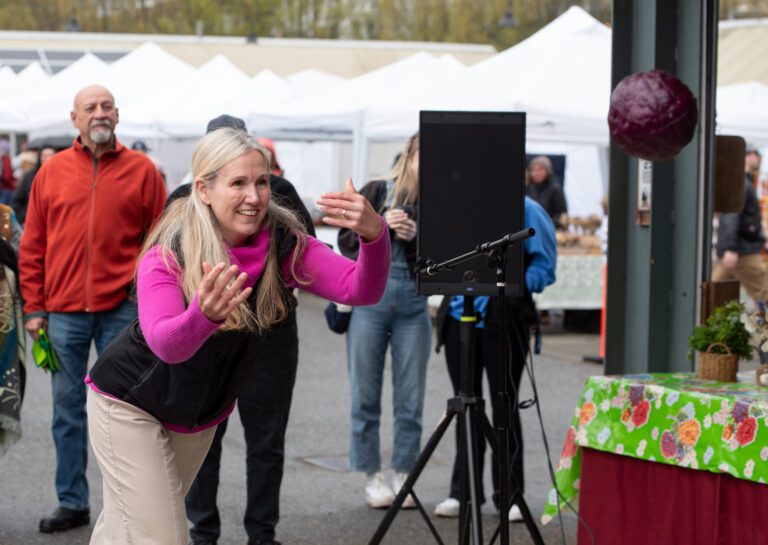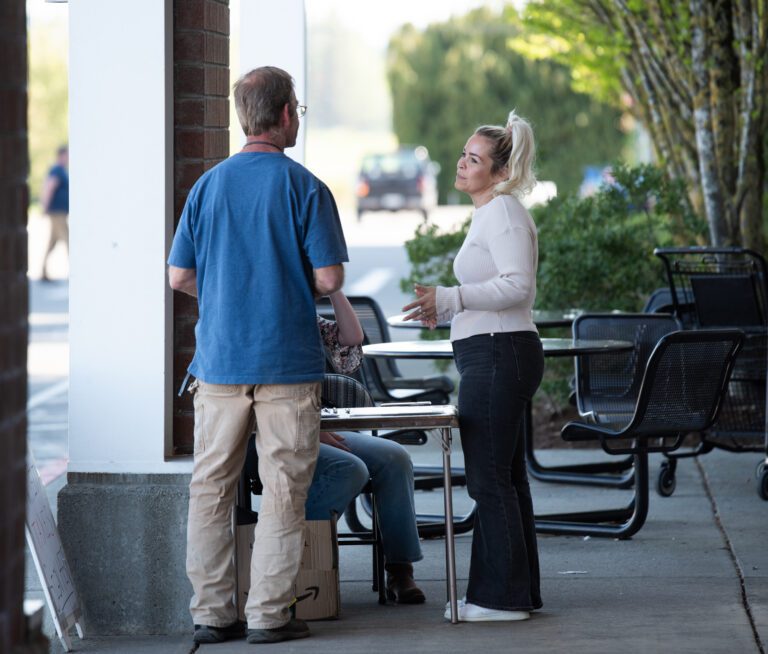The first draft of the City of Bellingham’s Urban Forest Plan is complete and open for public comment as the city begins immediate actions to increase canopy coverage.
The years-in-the-making plan establishes an overall target of 45% canopy coverage in the city by 2050. The exact canopy coverage will vary neighborhood by neighborhood, but the draft plan establishes a path toward meeting that target.
An “urban forest” includes all trees within the city — on both private and public land. According to the draft plan, an urban forest provides significant benefits to the city and its people: from regulating environmental conditions to providing health and social benefits to humans, the plan touts the importance of forested land within city limits.
The draft identifies six goals:
- Protect and expand the urban forest in alignment with community values as established in the Comprehensive Plan
- Protect and restore priority habitat areas, movement corridors and forests
- Manage the urban forest in alignment with best practices to support healthy and safe trees
- Adapt the urban forest for climate change resilience
- Collaborate with diverse people and organizations for urban forest management
- Monitor performance, adapt strategies.
To meet the 45% canopy coverage target by 2050, while offsetting expected canopy loss, the plan states that about 9,000 trees would need to be planted each year.
The plan is not “one size fits all,” Habitat and Restoration Manager Analiese Burns said at a city council committee meeting Monday, April 15.
“We can’t have 45% canopy cover everywhere, that would be too blunt of a tool to use,” she said, adding they need to consider the character of each neighborhood.
Burns also said the draft plan incorporates anticipated development.
“We are not trading housing types or the amount of development,” Burns said. “It’s not trees or housing. We’re assuming full buildout of our buildable lands assessment and where can we fit trees in the remaining space.”
There’s a large price tag tied to the implementation of the draft plan. Council already approved $100,000 in funds for this year. Burns estimated that the first five years of actions will cost the city $5 to $6 million a year, the sixth to 10th year will cost the city about $10 to $11 million a year, and then the last 10 years, implementation will cost $11 to $12 million a year.
Immediate and near-future actions
Last fall, city council approved $100,000 in the Mid-Biennial Budget Adjustment to go towards funding Community Tree Programs, which aim to work with community partners and increase tree planting on private property. According to the draft plan, 54% of trees in Bellingham are on private land.
On Monday, Burns outlined the four new programs the $100,000 will fund: neighborhood tree grants, community partnerships, tree giveaways and a tree coupon program.
The grants add to the city’s existing small and simple neighborhood grants and will allow neighborhoods to apply for $5,000 for planting efforts. For community partnerships, Burns said the city has contacted six nonprofits and the school district to see how they can work together to increase the tree canopy.
The city has also budgeted $2,000 for tree giveaways, and $13,000 for a tree coupon program launching this fall, which will allow citizens to purchase discounted trees at specific nurseries.
In addition, on May 20, city staff will bring forward for approval an interim landmark tree protection ordinance. It will protect all trees larger than 36 inches and certain designated landmark trees, Public Works Director Eric Johnston said.
Parks and Recreation Director Nicole Oliver said there will be a mechanism to nominate additional trees for other reasons. To remove one of these protected trees, people would have to meet a list of criteria. There will also be a permitting and enforcement mechanism in the ordinance, Oliver said.
Due to time limits at the committee meeting on Monday, council members will provide their feedback on the draft plan during a meeting in May.
After public comment concludes, city staff will present an engagement summary to council and incorporate that feedback into the final plan.
Charlotte Alden is CDN’s general assignment/enterprise reporter; reach her at charlottealden@cascadiadaily.com; 360-922-3090 ext. 123.




